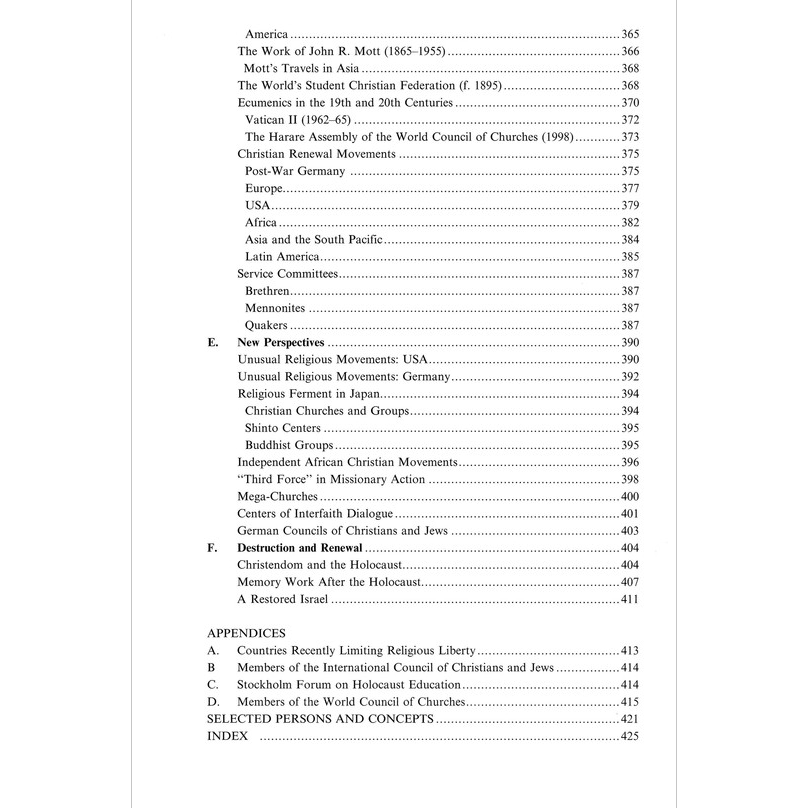Illustrated History of Christianity from Carta
Illustrated History of Christianity from Carta
SKU: PB409
Couldn't load pickup availability
This book undertakes to present the Christian movement by emphasizing three central points:
- intellectual discipline;
- moral and ethical discipline;
- expansion to a global religion from beginnings in the Roman province of Palestine.
Product Details:
- Bibliography
- Black & White
- Index
- Maps
- Illustrations
- Language: English
- Soft Cover
- 456 pages
- 6½ x 9¼ in. (16.7 x 23.7 cm)
- Weight: 686 g (24.2 oz)
Atlases that represent the first 1500 years of Christianity can, for the most part, safely rely on ethnic and national boundaries to provide the basic context for the maps and drawings that illustrate change. Yes, as one approaches the modern period, when the creedal preferences of rulers and governments become decreasingly determinative, the geographical portrayal of religion becomes more problematic. In our era this becomes more pronounced. How does one graphically portray 'Lutheran' Sweden or 'Catholic' Spain when only 3.6 percent and 15 percent, respectively, of the population, is actually practicing? Which is the best way to represent the life of Christians in China, Indonesia, or the Sudan? Franklin Littell's method is to highlight those times and places of crisis and decision - both internal and external - in which the shape and direction of Christianity was determined. Particular attention is paid to the interaction of Christians and Jews and to the encounter between Christianity and Islam.
Excerpt:
"First, for Christians who were born Jews (practically all the first generation of Christian believers), how was the personal event of Christian conversion to be related to the "root experiences" and "epoch-making events" of Israelite history? (The self-understanding of the gentile believers who now had access to these events was less complicated, although from Marcion of Sinope to the Deutsche Christen in the Third Reich, there have been numbers of the gentiles baptized who under the pressure and temptation, took flight from history into the non-being of their pre-covenantal existence).
Second, how is the "everlasting covenant" with the Jewish people to be related to the New Covenant which the Christian Church professed?"
Contents:
I. Early Christianity in its Setting
- The World of the Jews
- The World of the Greeks
- The Graeco-Roman World
II. The Christian Roman Empire
- Christianity Becomes Official
- Division of the Christian Imperium
- The Empire of Charlemagne and His Successors
- Disintegration of the Carolingian Empire
- Papal Efforts at Reintegration
- Disintegration of Papal Authority
- Rebellion in Latin Christendom
- The Magisterial Reformation and Reformers
- Wars of Religion
- Imperial and National Efforts at Reintegration of Latin Christendom
- European Christendom in the Age of Colonialism
- Initiatives by the Rank and File ("Laity")
III. The Age of Personal Decision
- Christianity and Ideology
- Religions in America
- The Great Century of Christian Missions
- The Ecumenical Movements
- New Perspectives
- Destruction and Renewal
Based on thorough scholarship, this Illustrated History features 200 maps and 240 illuminating illustrations.
About the Author: Reverend Franklin H. Lettill, Ph.D., is Emeritus Professor of Religion at Temple University and a longtime adjunct professor at Hebrew University. He was chief Protestant advisor to the U.S. High Commissioner in postwar Germany. He is the author of numerous books.
Additional Information
Additional Information
Share



























